What is Qanat? | Iran’s Ancient Qanat System
A qanat, an ancient underground water channel, skillfully transports water from deep aquifers to the surface, showcasing the ingenuity of traditional Persian engineering in arid landscapes.
The ancient qanat system is a defining aspect of Iran's landscape and culture, functioning as a sophisticated water management network dating back thousands of years. These underground aqueducts have played an essential role in supporting life and agriculture in Iran’s arid regions, making them valuable to historians, engineers, and travelers alike.
For visitors interested in the ingenuity of ancient civilizations, qanats offer a unique opportunity to understand how past societies overcame environmental challenges to create thriving communities. This article provides an in-depth look at qanats, examining their origins, engineering, and ongoing relevance today.
What is a Qanat?
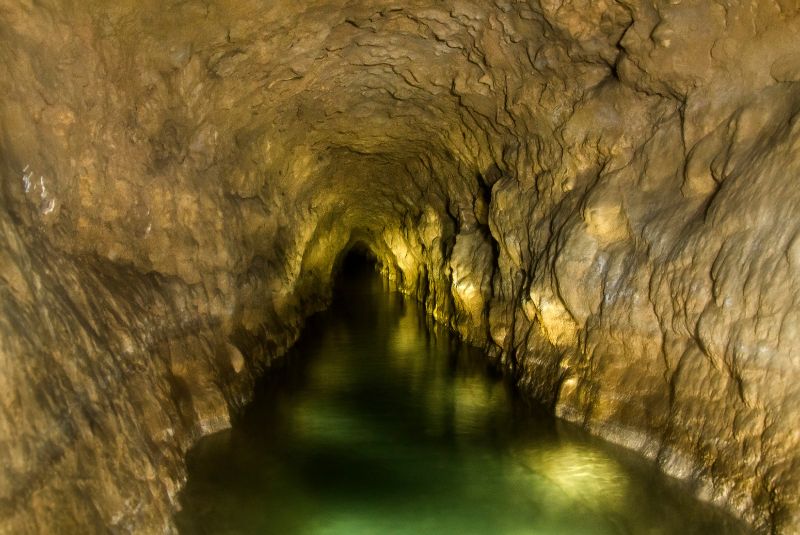
A qanat is an ancient irrigation system that channels groundwater from aquifers to the surface through a series of interconnected underground tunnels. Developed over 2,000 years ago, these systems harness the natural flow of water without the need for pumps, instead relying on gravity to transport water over long distances. Built in regions where water sources are scarce, qanats are particularly suited to dry climates like those found in central and southern Iran. The basic structure involves a sequence of vertical shafts leading to a gently sloped underground tunnel, which then directs the water to the surface at a lower elevation, providing a reliable source of water for drinking, farming, and industry.
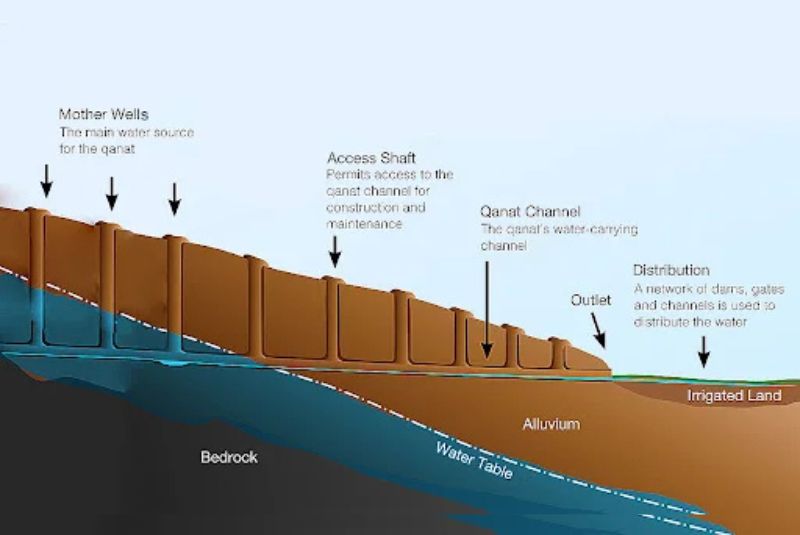
The development of qanats is widely credited to ancient Persia, where communities needed sustainable methods for transporting water from underground aquifers to surface-level areas in need. The engineering involved is both simple and advanced, allowing these systems to function with minimal maintenance and still operate in many regions today. Visitors to Iran can explore these remarkable structures, witnessing a form of sustainable engineering that has endured across centuries.
| Read more: The Ghasabe Qanats - The Oldest Qanats in the World
The History of Qanats in Iran
Origins and Evolution
The qanat system originated in ancient Persia, likely around 1,000 BCE, and became a vital solution for water management in a region where rivers and lakes were scarce. Historians believe that qanats were first developed in the region that is now Iran and gradually spread through trade routes to other arid regions, such as the Arabian Peninsula, North Africa, and even parts of Spain. This innovative technology allowed civilizations to prosper in challenging climates by bringing water from distant underground sources to populated areas, reducing reliance on seasonal rainfall and enabling stable agricultural practices.
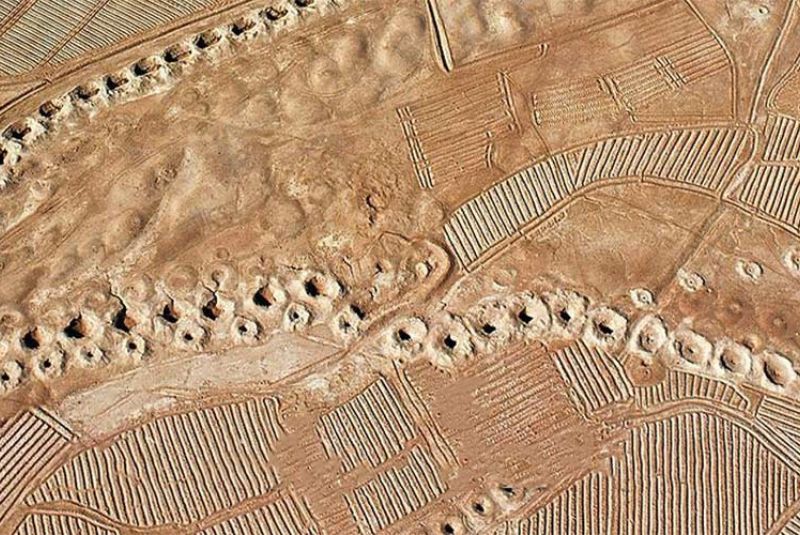
As Persia expanded, so did the knowledge and use of qanats. Over time, other civilizations adopted and adapted qanat technology, which became known under different names across regions. In Iran, the qanat not only supported rural life but also facilitated urban development in cities situated far from natural water sources. The qanat system’s enduring design reflects its effectiveness and adaptability, as its core principles remain relevant in water-scarce areas even today.
Engineering and Construction
Building a qanat required both expertise and labor, as constructing these systems was a complex process undertaken by skilled workers known as muqannis. These experts would locate aquifers, assess the slope required to transport water over long distances, and determine the ideal path for the tunnels. The construction of a qanat began with the digging of a mother well to access an underground water source, often at a depth of 20 to 200 meters. From there, a series of vertical shafts were dug at intervals along the path of the underground tunnel, which would slope downward at a very slight angle to allow water to flow naturally by gravity.
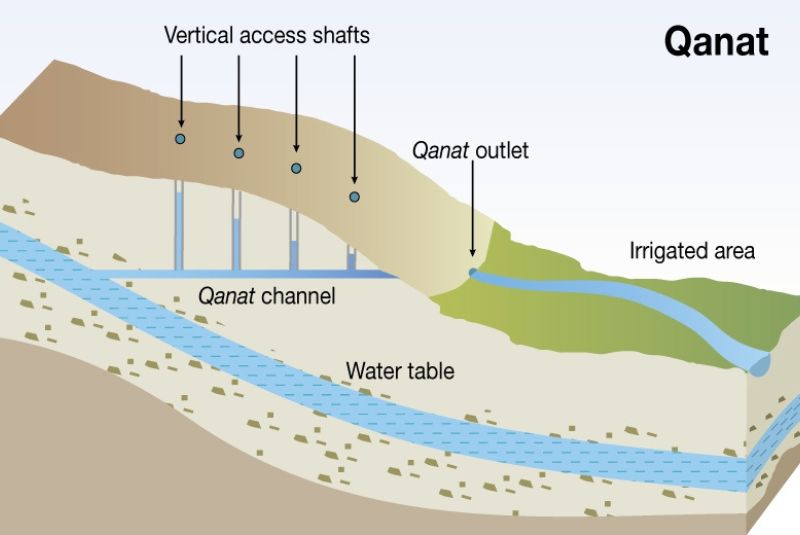
The vertical shafts provided ventilation and access points for excavation, while also serving as a means to remove soil during construction. Each step of the construction required precision to ensure that the slope was gradual enough to avoid erosion but steep enough to allow continuous water flow. The length of qanats varied, with some spanning several kilometers. The entire system was designed to withstand the test of time, and, as a result, many qanats in Iran have been functioning for centuries.
Social and Economic Importance
Qanats significantly shaped Persian society by supporting agriculture in arid regions, enabling the growth of crops and supporting livestock where natural water sources were scarce. For rural communities, the qanat became an essential resource, allowing them to cultivate grain, fruits, and vegetables in environments that would otherwise be inhospitable. Qanats also provided a stable water supply for cities, fostering urban development and reducing the dependence on seasonal rainfalls or distant rivers.
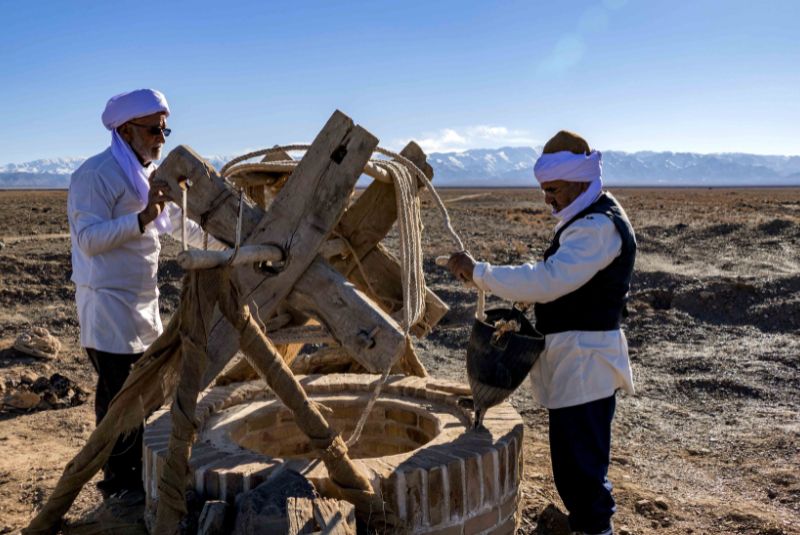
Beyond agriculture, qanats facilitated economic growth by supplying water to craft industries, helping cities become centers of trade and production. Villages and towns grew around these water sources, and access to a qanat often determined the prosperity of a settlement. This relationship between qanats and local communities became so integral that rules and customs were developed around water usage, rights, and maintenance, many of which persist in qanat-rich regions today. For travelers, visiting a qanat offers an insight into the sustainable solutions ancient Persians devised to thrive in arid landscapes—a legacy that continues to impact daily life in Iran.
| Read more: Shushtar Hydraulic System - An Ancient Engineering Wonder
How Qanats Work?
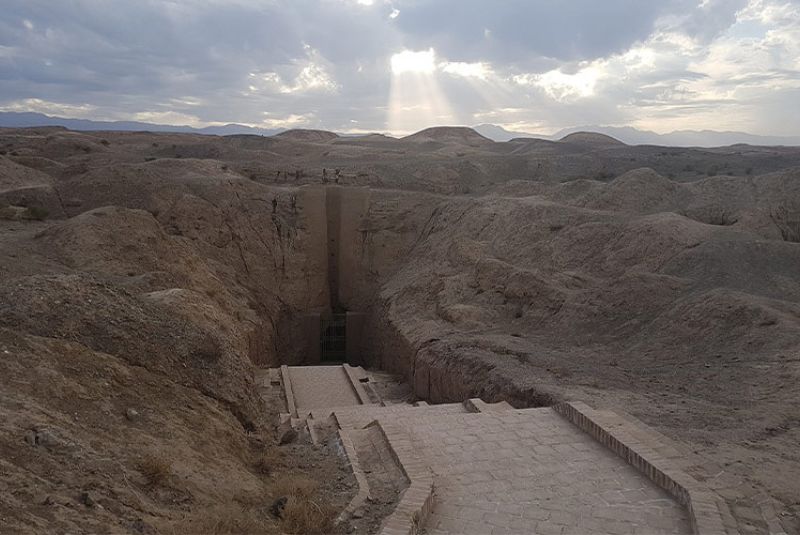
The Structure of a Qanat
The qanat system is a remarkable feat of ancient engineering, consisting of several key parts that work in harmony to transport water from underground sources to the surface. The primary components include:
Mother Well: The qanat’s source, the mother well is typically dug into an aquifer, often deep within mountainous or elevated areas. This well is the entry point for the water, with depths that can range from a few meters to several hundred meters depending on the aquifer's location.
Vertical Shafts: A series of vertical shafts is spaced along the qanat’s path, connecting the mother well to the surface at regular intervals. These shafts serve multiple purposes, including ventilation, soil removal during construction, and regular access points for maintenance. The spacing of the shafts helps maintain structural integrity and prevents collapse.
Underground Channel: The underground channel, or tunnel, is a gently sloped passageway that allows water to flow downhill from the mother well to the surface outlet by the force of gravity alone. The slope is engineered carefully to ensure a gradual descent, which prevents erosion and maintains a steady flow.
Outlet (or Kariz): The endpoint of the qanat, the outlet is where water finally reaches the surface. Here, it can be directed toward fields, reservoirs, or directly into urban water systems for public use. The outlet often leads into irrigation ditches or pools that distribute water to surrounding areas.
Together, these components create a system that can channel water over long distances, sometimes extending more than 20 kilometers, while ensuring minimal water loss.
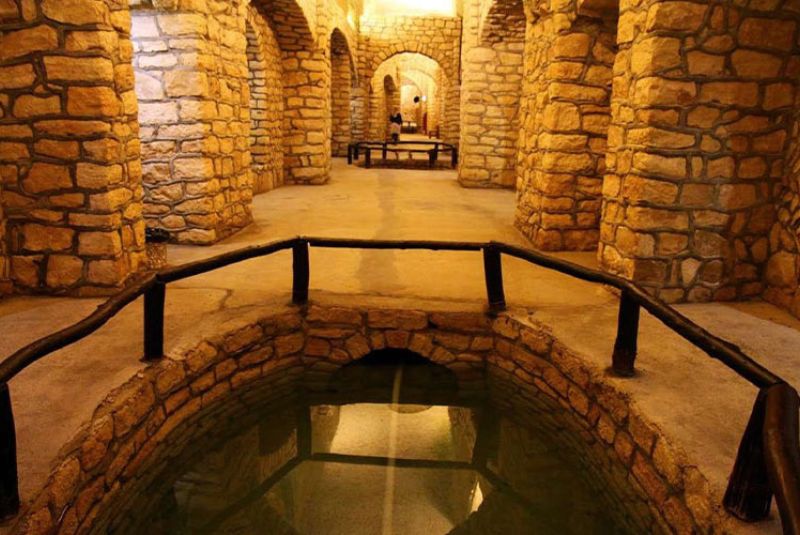
Water Collection and Distribution
Qanats are designed to tap into natural underground aquifers, taking advantage of the Earth’s geology to collect and channel water. The mother well penetrates the aquifer, allowing water to seep into the well from surrounding rock formations. Once the water enters the qanat system, gravity naturally directs it through the underground channels. Because of the consistent slope of the tunnel, water flows continuously without needing pumps or other mechanical devices.
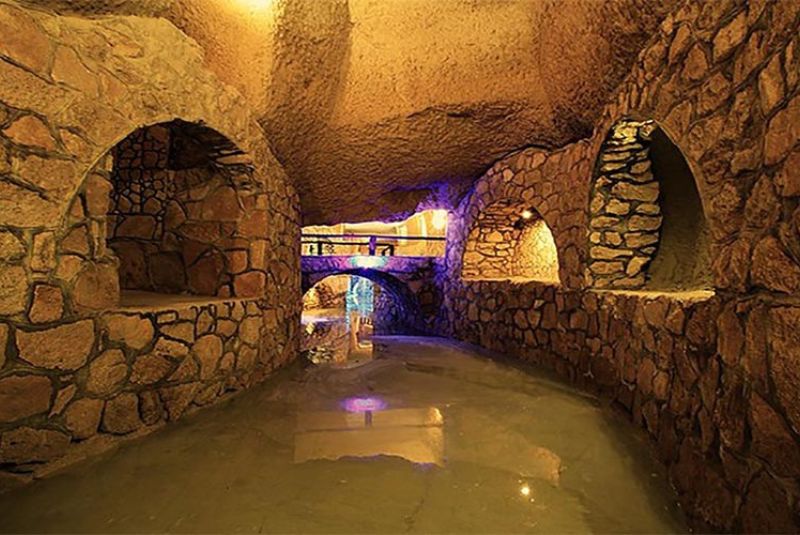
This slow but steady movement allows qanats to transport water across arid landscapes, providing a stable supply that remains unaffected by seasonal droughts or surface evaporation. The water collected at the outlet can be diverted into smaller irrigation channels for agricultural use or channeled into cisterns for drinking water. This simple yet effective distribution method has made qanats an indispensable resource for communities in arid and semi-arid areas.
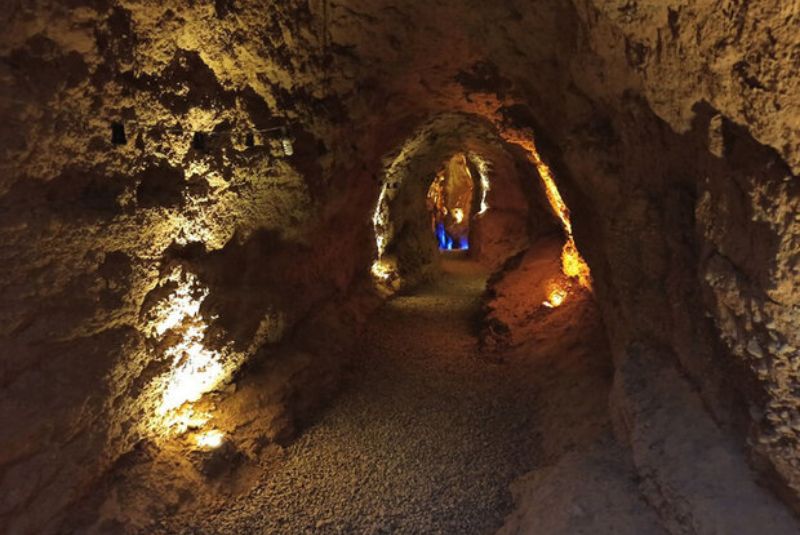
Environmental Efficiency
One of the most remarkable aspects of the qanat system is its environmental efficiency. Unlike modern pumping systems, which require electricity or fuel, qanats rely solely on gravity to transport water, reducing energy consumption and lowering environmental impact. This design also helps conserve water by protecting it from evaporation, a common issue in above-ground canals exposed to the hot, dry climate of Iran.
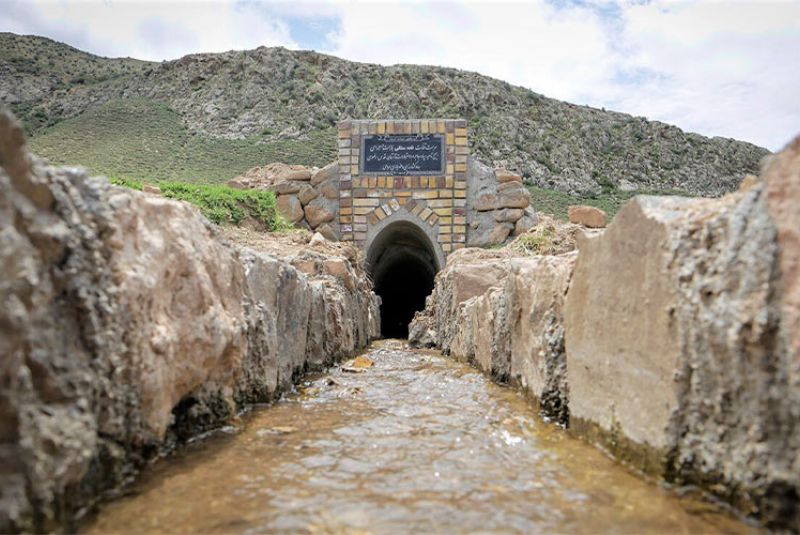
Qanats are a sustainable solution, allowing communities to access water without over-exploiting their natural resources. By drawing water slowly and at a consistent rate, qanats prevent the depletion of aquifers, which helps maintain groundwater levels. This natural, low-impact system has allowed many qanats to operate for hundreds of years, proving their resilience and adaptability in managing water sustainably.
| Suggestion: Iran Windmill - Ancient Windmills in Iran
Best Places to Visit Qanats in Iran
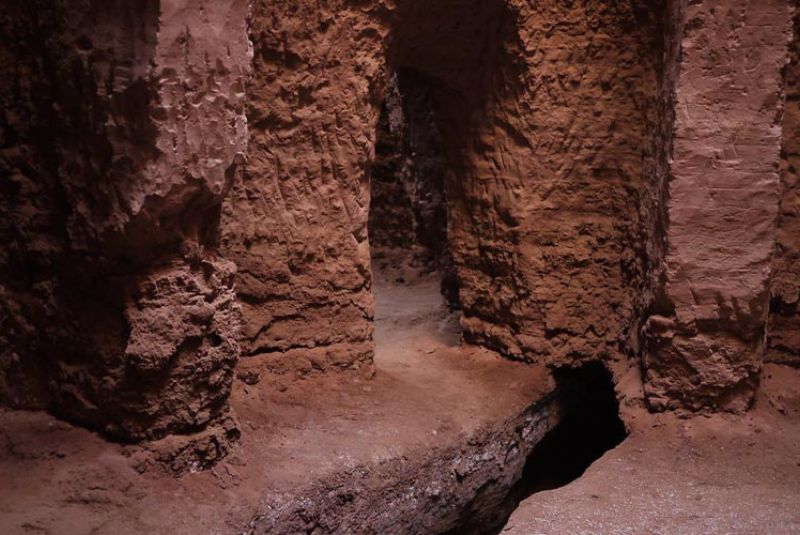
For travelers interested in exploring qanats firsthand, Iran has several key locations where these ancient systems are well-preserved, many of which are recognized for their cultural and historical significance.
1. Yazd – UNESCO-Listed Persian Qanat
The city of Yazd is perhaps the best-known location for seeing operational qanats. A UNESCO World Heritage site, Yazd is famous for its extensive network of qanats, some of which are over 1,000 years old and still functioning today. UNESCO has listed 11 qanats across Iran as part of the “Persian Qanat” designation, and several of these are located in Yazd Province. The qanats in Yazd not only highlight the sophistication of ancient water management but also show how this system continues to support life in one of Iran’s driest cities.
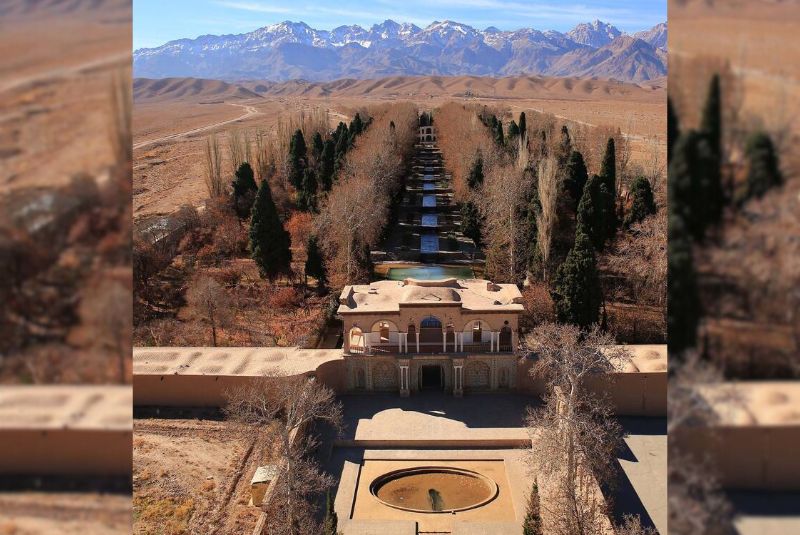
Visitors can explore sites such as the Zarch Qanat, one of the longest qanats in the world, stretching over 70 kilometers. Tours in Yazd often include visits to traditional qanat houses and underground reservoirs, where travelers can learn more about the techniques used to maintain these networks.
| Related tours: Yazd Tour Packages
2. Kerman Province – The Ancient System at Work
Kerman Province is another region where persian qanats have played a crucial role for centuries. Known for its arid landscape, Kerman relies heavily on qanat systems, some of which date back to ancient times. The qanats here not only supported agriculture but also allowed the development of urban centers by supplying a steady source of water.
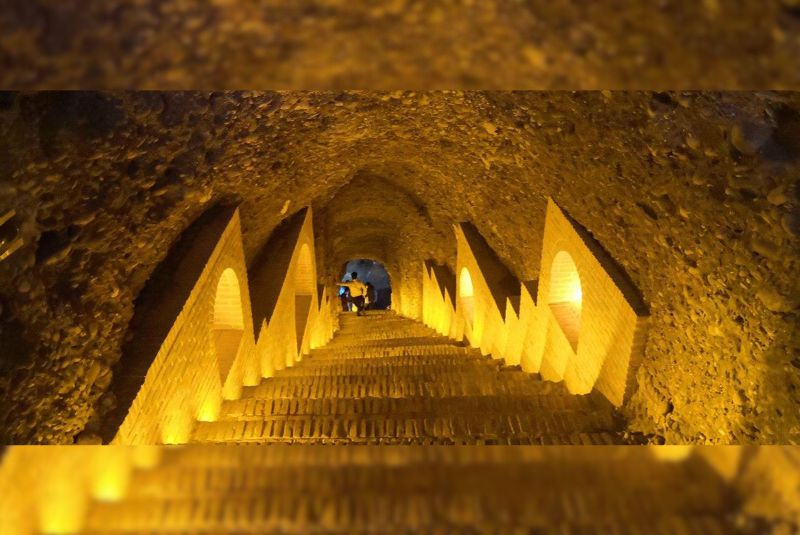
Tourists visiting Kerman can join guided tours that delve into the local history of qanats, offering insights into how these systems are managed today. Many tours also include a visit to the Shazdeh Garden, an oasis that relies on qanat irrigation, illustrating how this ancient system can create lush, productive landscapes even in harsh climates.
| Related tours: Kerman Tour Packages
3. Gonabad Qanat in Razavi Khorasan Province
Located in Razavi Khorasan Province, the Gonabad Qanat is one of Iran’s oldest and most famous qanats. Believed to be over 2,500 years old, the Gonabad Qanat is often cited as one of the earliest examples of this engineering innovation. Its impressive construction and survival through the ages make it a popular destination for history enthusiasts and engineers alike.
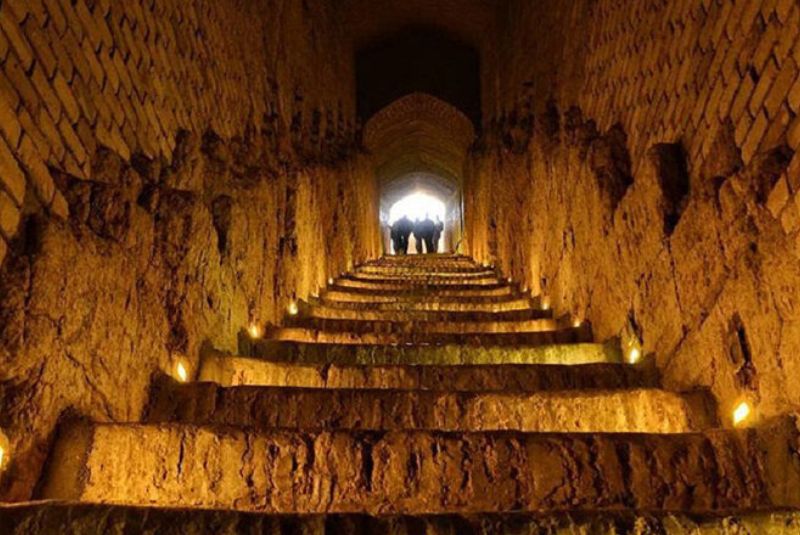
This qanat system is notable not only for its age but also for its depth, with some mother wells reaching over 300 meters. Visitors to the Gonabad Qanat can gain insight into the expertise required to build and maintain such a system and can observe the traditional methods still used by locals to keep it operational.
Tips for Visiting Qanat Sites

Best Time to Visit
When planning a visit to Iran’s qanat sites, timing can make a big difference in your experience. Generally, the ideal times to explore these regions are spring (March to May) and autumn (September to November), when temperatures are mild, and conditions are pleasant for walking tours and outdoor exploration. Summers in central and southern Iran, where most qanats are located, can be extremely hot, with temperatures often exceeding 40°C (104°F), which may be uncomfortable for extended outdoor activities. Winter months can also be an option, though some areas in northern and higher-elevation regions may experience cold and potentially snowy weather.
Getting Around
Iran has a well-connected transportation system, making it relatively easy to reach major qanat sites, though access to some remote areas may require advance planning. Here are the primary ways to travel between cities and qanat sites:
- Domestic Flights: For travelers on tight schedules, Iran offers domestic flights connecting major cities like Tehran, Yazd, Kerman, and Mashhad, all of which are close to notable qanat sites. Flights are generally affordable and can save significant travel time.
- Buses: Iran’s bus network is extensive, with comfortable long-distance buses that connect most cities. Bus travel is an economical option, though it requires more time compared to flying. Overnight buses are also available and can be a good way to save on accommodation while traveling.
- Car Rentals and Taxis: Renting a car or hiring a local taxi for a day is a convenient way to explore qanat sites, especially in rural or remote areas where public transport may be limited. However, note that driving regulations in Iran may differ from those in other countries, and travelers may prefer hiring a driver to navigate the roads and language barriers.
In many cases, local tour operators offer guided tours of qanat systems, especially in cities like Yazd and Kerman, which can be an excellent way to gain deeper insights and have easier access to the qanats.
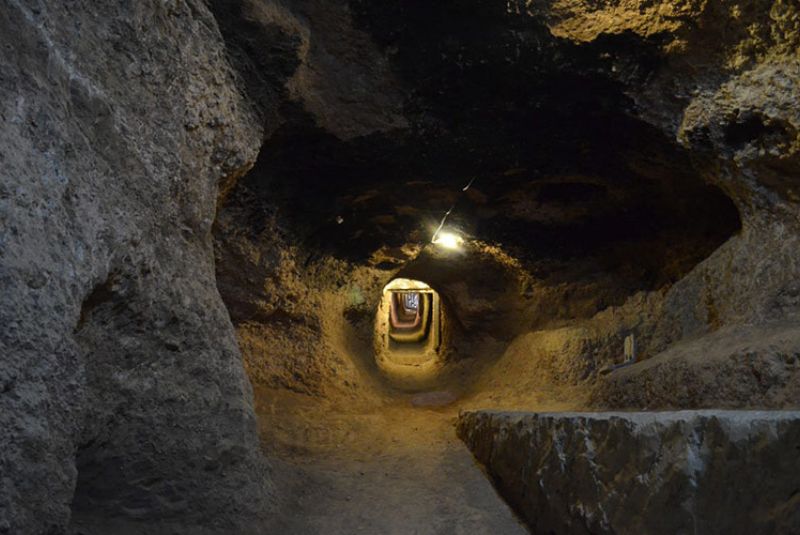
Recommended Etiquette and Safety
Exploring qanat sites often takes visitors to rural areas where traditional customs and social norms are observed. Here are some key etiquette tips and safety guidelines to keep in mind:
- Respect Local Customs: Iran is a conservative society, particularly in rural areas, so it’s important to dress modestly, covering arms and legs. Women are required to wear headscarves in public spaces throughout Iran.
- Seek Permission Before Entering: Some qanats are located on private land or in small villages. Always ask permission from locals or guides before entering a qanat site or walking through cultivated fields, as these may be vital resources for the community.
- Safety Inside Qanats: Entering the underground sections of a qanat can be fascinating but also potentially hazardous. Visitors should follow any posted signs or guidelines, stay within designated areas, and avoid entering unlit or restricted tunnels. Some qanats may be narrow or lack structural reinforcements, so it’s essential to exercise caution and consider joining a guided tour to ensure safe exploration.
- Environmental Care: Qanats are sensitive, ancient systems, and it’s important to preserve their integrity. Avoid touching delicate structures or disturbing the water flow, as even small actions can impact the qanat’s sustainability. Taking photos is generally permitted, but it’s best to check with your guide or host first.
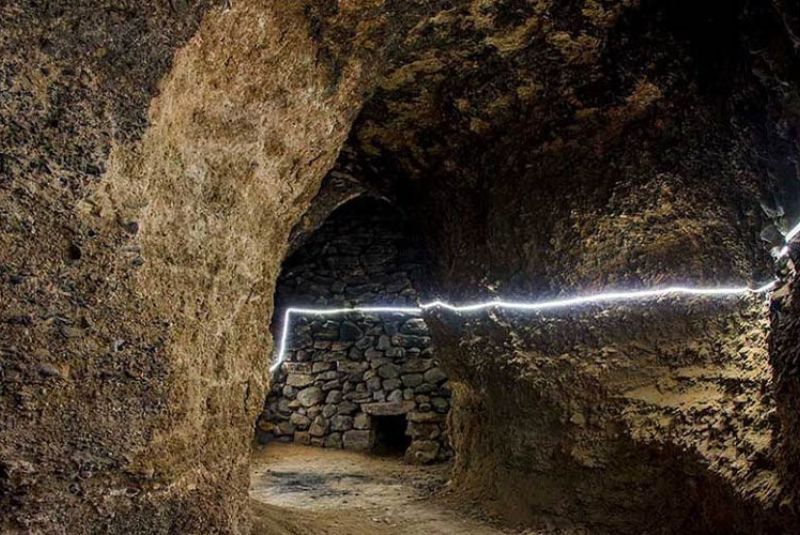
Final Takeaway
Iran’s qanats are more than ancient infrastructure; they represent a longstanding relationship between people and their environment. These engineering marvels have enabled communities to thrive in some of the world’s most challenging climates for thousands of years, making qanats an important part of Iran’s landscape and identity.
By visiting Iran’s qanat sites, travelers not only gain insight into the country’s past but also support the preservation of these systems for future generations, contributing to the cultural continuity of a unique aspect of Persian life.
Share your story!
Comment below and let us know about your Experience.
Your story inspires others!


Comment
Leave a Comment